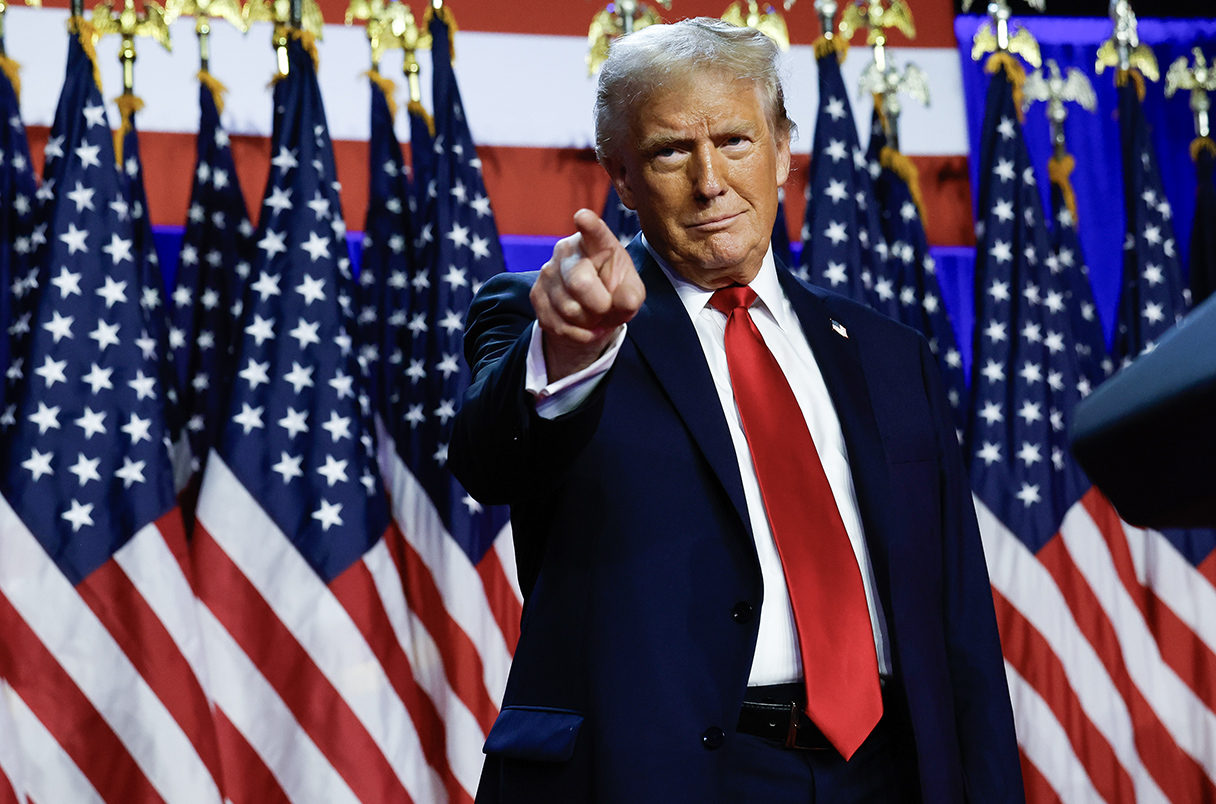Trump Escalates Trade War with EU and BRICS, Sparks Global Tensions
15.02.2025 11:00 2 min. read Alexander Stefanov
Trump is pushing ahead with aggressive tariffs, setting the stage for economic tensions with both the EU and BRICS.
He has given an April 1 deadline for a new tariff plan, arguing that European trade policies, such as VAT, put American businesses at a disadvantage.
European Commission President Ursula von der Leyen warned that the EU would retaliate immediately, calling the tariffs unjustified and harmful to global trade. Attempts at dialogue have failed, with brief meetings between EU officials and Trump’s team yielding no progress. Meanwhile, Trump plans to expand tariffs beyond just reciprocal measures, targeting key industries like automobiles, semiconductors, and pharmaceuticals.
His trade war isn’t limited to Europe. Trump has also issued a warning to BRICS, claiming that his past tariff threats prevented the bloc from introducing a common currency to rival the dollar. He vowed to impose a 100% tariff if BRICS nations attempt to challenge the dollar’s dominance. However, BRICS leaders deny such plans, emphasizing their focus on increasing trade in local currencies rather than creating a single alternative to the dollar.
Beyond specific regions, Trump is reviewing global trade policies, evaluating import duties, intellectual property rules, and VAT structures. Commerce Secretary Howard Lutnick confirmed that a broader tariff strategy is in motion, with results expected by April. China has already faced increased tariffs, and Trump is now shifting focus to sectors he believes harm U.S. economic interests.
Europe is struggling to engage with Trump’s administration. Vice President JD Vance’s comments at the Munich Security Conference highlighted growing rifts, as he criticized European governance and democratic policies rather than addressing economic concerns. His remarks, accusing European leaders of fearing their own voters, were met with visible discontent.
Meanwhile, Trump’s foreign policy moves are causing unease in Europe. His direct conversation with Vladimir Putin regarding Ukraine, excluding European allies, sparked alarm among NATO members. EU leaders insist that any resolution must involve Ukraine, fearing Trump’s approach could undermine their strategic position. The market response was immediate—Russian stocks surged while European defense companies saw declines, reflecting uncertainty over U.S. commitment to its allies.
-
1
Tom Lee Warns Fed Could Trigger Market Turmoil With Delayed Pivot
22.06.2025 19:00 3 min. read -
2
Fed’s New Projections Hint at a Slower Easing Cycle Through 2026
19.06.2025 15:00 2 min. read -
3
Trump Targets Fed Over Missed Rate Cut Opportunity
20.06.2025 9:00 1 min. read -
4
UK Inflation Stalls at 3.4%, Spotlight Shifts to BoE’s August Meeting
19.06.2025 9:00 2 min. read -
5
Fed Holds Fire on Rates, Signals Cuts Could Arrive if Jobs Falter
18.06.2025 21:30 1 min. read
Key U.S. Economic Events to Watch Next Week
After a week of record-setting gains in U.S. markets, investors are shifting focus to a quieter yet crucial stretch of macroeconomic developments.
Robert Kiyosaki Predicts When The Price of Silver Will Explode
Robert Kiyosaki, author of Rich Dad Poor Dad, has issued a bold prediction on silver, calling it the “best asymmetric buy” currently available.
U.S. PCE Inflation Rises for First Time Since February, Fed Rate Cut Likely Delayed
Fresh data on Personal Consumption Expenditures (PCE) — the Federal Reserve’s preferred inflation gauge — shows inflation ticked higher in May, potentially delaying the long-awaited Fed rate cut into September or later.
Trump Targets Powell as Fed Holds Rates: Who Could Replace Him?
Federal Reserve Chair Jerome Powell is once again under fire, this time facing renewed criticism from Donald Trump over the Fed’s decision to hold interest rates steady in June.
-
1
Tom Lee Warns Fed Could Trigger Market Turmoil With Delayed Pivot
22.06.2025 19:00 3 min. read -
2
Fed’s New Projections Hint at a Slower Easing Cycle Through 2026
19.06.2025 15:00 2 min. read -
3
Trump Targets Fed Over Missed Rate Cut Opportunity
20.06.2025 9:00 1 min. read -
4
UK Inflation Stalls at 3.4%, Spotlight Shifts to BoE’s August Meeting
19.06.2025 9:00 2 min. read -
5
Fed Holds Fire on Rates, Signals Cuts Could Arrive if Jobs Falter
18.06.2025 21:30 1 min. read


